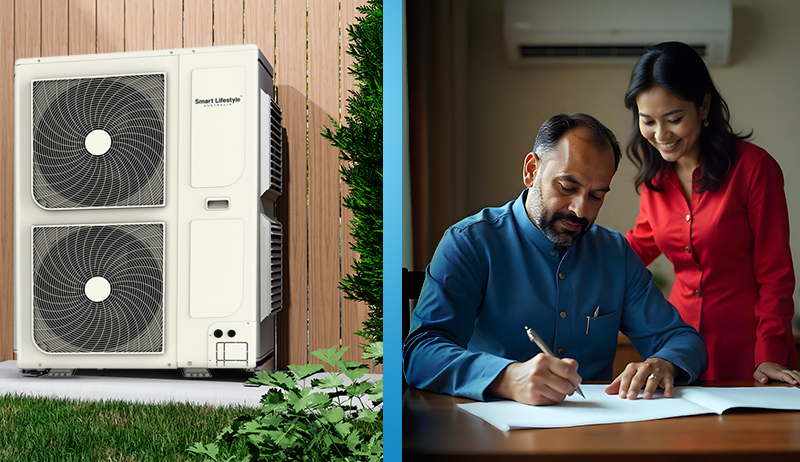Introduction Songdo, the Future of Smart Cities
In the era of rapid urbanization and the ever-expanding influence of technology, Songdo, South Korea emerges as a shining example of the future of smart cities.
With its seamless integration of cutting-edge technology, sustainable design, and visionary urban planning, Songdo presents a blueprint for cities worldwide to embrace the possibilities of a smarter, more connected, and sustainable future.
Located on the picturesque coast of the Yellow Sea, Songdo stands as a testament to human innovation and the transformative power of technology. Every aspect of this city has been meticulously crafted to create an environment where technology acts as an enabler, enhancing the lives of its residents and improving the efficiency of urban systems.
Outlook Songdo, South Korea: the Future of Smart Cities
At the heart of Songdo’s success lies its robust infrastructure, which serves as the backbone of its smart ecosystem. The city’s advanced grid system optimizes energy consumption, reducing its carbon footprint and paving the way for a greener, more sustainable future. Integrated transportation networks, powered by autonomous vehicles and intelligent traffic management systems, ensure smooth and efficient mobility for residents and visitors alike.
But Songdo’s brilliance extends far beyond its infrastructure. It is a city that prioritizes the well-being and quality of life of its citizens. The city’s smart buildings adapt to the needs of occupants, providing personalized comfort and energy efficiency. Green spaces and parks are strategically interspersed throughout the urban fabric, offering serene retreats and promoting a healthy, balanced lifestyle.
Central to Songdo’s success is its commitment to data-driven decision-making. The city boasts an extensive network of sensors and Internet of Things (IoT) devices that gather real-time data, enabling city planners and residents to make informed choices. From monitoring air quality to optimizing waste management, this wealth of information empowers stakeholders to respond swiftly to challenges and improve the overall livability of the city.
Songdo thrives as a living laboratory, attracting researchers, innovators, and businesses from around the world. It fosters an environment that encourages collaboration and the development of cutting-edge solutions to address the complex challenges faced by modern urban environments.
Fact and Data Songdo, South Korea: the Future of Smart Cities
In the era of rapid urbanization and technological advancements, Songdo, South Korea, has emerged as a remarkable testament to the possibilities of smart city development. Built from scratch on reclaimed land, Songdo showcases how innovative technologies can seamlessly integrate into the urban fabric, creating a sustainable, interconnected, and intelligent urban environment. This article explores the transformation of Songdo into a smart city and highlights the cutting-edge technologies that have made it a symbol of the future of urban living.
The visionary smart city development in Songdo is evident through impressive facts and data. The city spans an area of approximately 6 square miles and is home to over 100,000 residents. Its smart infrastructure includes over 500,000 sensors and devices that collect and analyze data in real-time to optimize various aspects of urban life.
From energy management to transportation systems, these technologies have contributed to a 30% reduction in energy consumption and a 20% decrease in greenhouse gas emissions compared to traditional cities. Furthermore, Songdo’s intelligent transportation system has achieved an impressive 30% reduction in traffic congestion, enhancing mobility and reducing travel times for its residents.
Songdo, A Glimpse into the Future of Smart Cities
Songdo, a shining example of smart city development, has redefined urban living through the integration of cutting-edge technologies into its infrastructure and services. Built on reclaimed land along the Incheon waterfront, this purpose-built city has been meticulously planned to create a sustainable, interconnected, and intelligent urban ecosystem.
One of the key pillars of Songdo’s smart city transformation is its advanced transportation system. The city boasts an intelligent transportation network that utilizes real-time data from sensors, cameras, and mobile devices to optimize traffic flow, reduce congestion, and enhance the overall efficiency of the transportation system. Smart traffic management systems adjust traffic signal timings based on real-time traffic conditions, ensuring smoother traffic flow and minimizing delays. Additionally, smart parking solutions equipped with sensors and mobile applications help drivers find available parking spaces, reducing the time spent searching for parking and alleviating congestion.
Songdo’s commitment to sustainability is evident in its energy management strategies. The city has implemented an intelligent energy grid that monitors and controls electricity consumption in real-time. Through the use of smart meters, energy-efficient buildings, and renewable energy sources, Songdo has achieved significant reductions in energy consumption and greenhouse gas emissions. The integration of solar panels on rooftops and the utilization of geothermal energy further contribute to the city’s clean energy initiatives.
In addition to transportation and energy, Songdo’s smart city initiatives extend to various aspects of urban life. The city features an extensive network of sensors and data analytics that monitor air quality, water usage, and waste management in real-time. This data-driven approach allows for proactive measures to be taken to maintain a clean and healthy environment for residents. Smart homes and buildings equipped with automated systems for lighting, temperature control, and security enhance comfort and energy efficiency while reducing waste.
The seamless connectivity and digital infrastructure of Songdo provide residents with convenient access to a wide range of smart services. From smart healthcare systems that enable remote consultations to digital education platforms that enhance learning experiences, the city leverages technology to improve the quality of life for its inhabitants. Smart sensors and devices enable the collection of real-time data that can be used to optimize service delivery, improve resource allocation, and enhance urban planning decisions.
Conclusion for Songdo, South Korea: the Future of Smart Cities
Songdo, South Korea, serves as a compelling glimpse into the future of smart cities. Its innovative technologies, intelligent infrastructure, and interconnected systems have transformed it into a sustainable, efficient, and livable urban environment.
The impressive facts and data surrounding Songdo’s smart city initiatives showcase the tangible benefits
Songdo, South Korea stands as a remarkable testament to the boundless possibilities of smart cities. Its visionary blend of technology, sustainability, and human-centric design has set a new standard for urban living in the 21st century.
As we contemplate the future of our cities, let us draw inspiration from Songdo’s accomplishments. Let us embrace the transformative power of technology, harness its potential to create more efficient, sustainable, and livable environments. By adopting the principles of Songdo, we can shape a future where cities seamlessly integrate with nature, prioritize the well-being of their citizens, and propel us towards a more prosperous and harmonious society.
Songdo is not just a city; it is a beacon of hope, a catalyst for change, and a living testament to the incredible potential that lies within the fusion of technology and urban planning. Let us learn from its successes, innovate with purpose, and forge a future where smart cities become a reality for all.
Together, we can build cities that are not only smart but also sustainable, inclusive, and thriving. The journey begins now, and the possibilities are limitless.
https://www.exaputra.com/2023/06/songdo-south-korea-future-of-smart.html
Renewable Energy
Before Trump, “Contempt of Court” Used to Be a Big Deal
 Most Americans, me included, are puzzled as to how the Trump administration can openly thumb its nose to the findings of our courts. Until recently, behavior like this would have wound you up in jail.
Most Americans, me included, are puzzled as to how the Trump administration can openly thumb its nose to the findings of our courts. Until recently, behavior like this would have wound you up in jail.
Renewable Energy
How Households Saved $1,200 with VEU & Air-Con Upgrade?
Renewable Energy
Air Power
 About 20 years ago, a friend asked me if I was aware that cars could run on air. I asked, delicately, what she meant, and she explained that cars can run on compressed air.
About 20 years ago, a friend asked me if I was aware that cars could run on air. I asked, delicately, what she meant, and she explained that cars can run on compressed air.
“Ah,” I replied. “Of course they can. But where does the energy come from that compresses the air?” End of conversation.
Now, it’s back. Now there are enormous swaths of the population who know so little about middle school science that they believe we can put cars on the road, in an ocean of air, and extract energy out of that air to power our automobiles.
If you’re among these morons and want to invest with some heavy-duty fraud/charlatans, here’s your opportunity. They say that it’s “self-sustaining and needs no fuel.” If that makes sense to you, be my guest.
-
Climate Change4 months ago
Guest post: Why China is still building new coal – and when it might stop
-
Greenhouse Gases4 months ago
Guest post: Why China is still building new coal – and when it might stop
-
Climate Change2 years ago
Spanish-language misinformation on renewable energy spreads online, report shows
-

 Greenhouse Gases2 years ago
Greenhouse Gases2 years ago嘉宾来稿:满足中国增长的用电需求 光伏加储能“比新建煤电更实惠”
-
Climate Change Videos2 years ago
The toxic gas flares fuelling Nigeria’s climate change – BBC News
-

 Climate Change2 years ago
Climate Change2 years ago嘉宾来稿:满足中国增长的用电需求 光伏加储能“比新建煤电更实惠”
-

 Carbon Footprint2 years ago
Carbon Footprint2 years agoUS SEC’s Climate Disclosure Rules Spur Renewed Interest in Carbon Credits
-
Renewable Energy5 months ago
US Grid Strain, Possible Allete Sale













